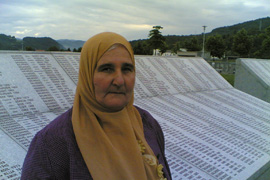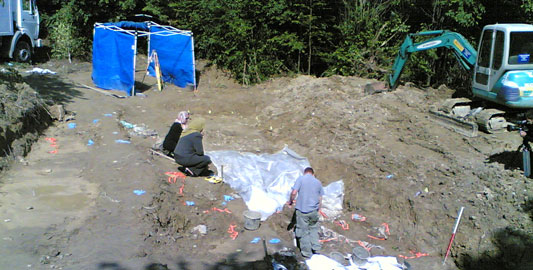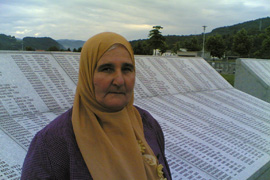Srebrenica survivors seek closure
Newly discovered mass graves reveal the horrors of the 1995 massacre.

 |
| Another mass grave is uncovered near the town of Srebrenica, site of a 1995 massacre of Bosnian Muslim boys and men |
In July 1995, at the height of the wars in the former Yugoslavia, the United Nations created a safe haven for refugees around the town of Srebrenica.
Dutch troops guarded the refugees, most of whom were Bosnian Muslims, seeking shelter there. The people thought they were safe, but the Dutch came under fire from the advancing Serb forces soon thereafter.
The UN contingent demanded aircraft fly in to help them, but the HQ didn’t answer their call and so the Dutch fearing for their lives from superior forces stood aside and let the Serbs in. What happened next became the largest massacre in Europe since World War Two.
Eight thousand men and boys were rounded up, stripped of their identification papers and then slaughtered.
The International Criminal Court called the massacre at Srebrenica an act of genocide.
The leader of the Bosnian Serbs, Radovan Karadzic and his military commander Ratko Mladic, who ran the military campaigns in Bosnia are still wanted for crimes against humanity.
Thirteen years later, the mothers of Srebrenica are asking Dutch courts to dismiss the UN’s claims of immunity so that the UN forces in charge of the safe haven may face the legal consequences.
Losing family members
 |
| Munira Subasic lost 22 members of her family when Bosnian Serbs overran Srebrenica |
The drive from Sarajevo to Srebrenica takes just over two hours, but during the war it would have taken three or four times as long.
Checkpoints had to be literally negotiated and back roads used as they afforded some protection from sniper and mortar fire. Now on a modern road, the brooding dark hills with homes seemingly perched impossibly on the sides zip past, as do the street-side cafes where the unemployed local men can make a coffee last for two hours.
Munira Subasic could be anyone’s grandmother. A small, solid formidable woman, she is now President of the Mothers of Srebrenica Association. On the edge of the town lies the impressive memorial garden. Next to the graveyard with its row upon row of white headstones, there is a large half circle of marble slabs.
Under the letter ‘S’, there are the names of Subasic’s family – her husband, her son, and her daughters. She lost a total of 22 family members, who are buried here with some 8,000 other victims of Srebrenica.
I ask her why the court case is important:
“To get the UN to admit what it did, it walked away and allowed genocide. And to get compensation for the children without fathers, for the wives without husbands, for the lives that were taken”.
As we walk around this serene and peaceful spot which marks such tragedy, she says: “How can you have a clean future until you have a clean past?”
Unearthing buried secrets
Even now the ground is still revealing the secrets of the horrors that happened in Srebrenica.
Ten kilometres from the centre of the town, down a think strip of path, there is a wooded area where investigators have uncovered another mass grave.
The makeshift plastic cover is pulled back to reveal bones and shoes and rags, – the last earthly remains of people who died here violently.
Sabaheta Fejzic visits every new grave that is uncovered hoping to one day track down what became of her son, her husband, and her father. All taken. All murdered.
“I know it is unlikely after this time I will find them but every time I hear of a new grave I hope that at last my soul can rest. Many bodies were burned or thrown in the river. But for some families this place means that their nightmare is over. One day it may be so for me”.
By her side is Zumra Sehomerovic. Some of her husband’s bones have been recovered, but not his head or his legs. “They killed him in one spot and then mutilated his body. It was a crime on top of a crime. When they find his head I shall finally be able to lay him to rest and I will have a place to lay a rose”.
The work at this site is almost done with the remains of three full skeletons and 56 partial ones uncovered. There is another site nearby that will soon be investigated and examined for remains.
Until then, more families will wait, watch and hope.